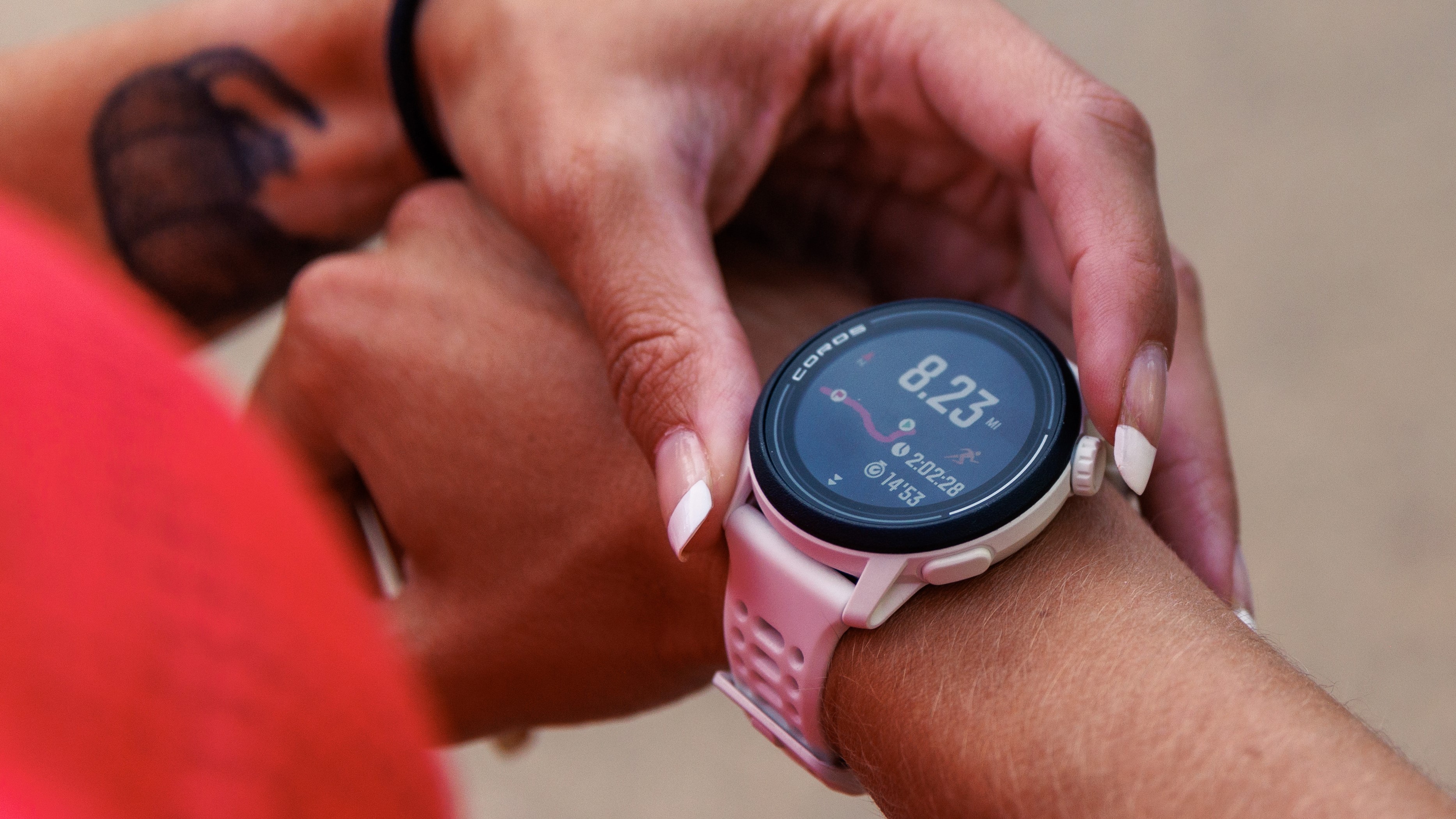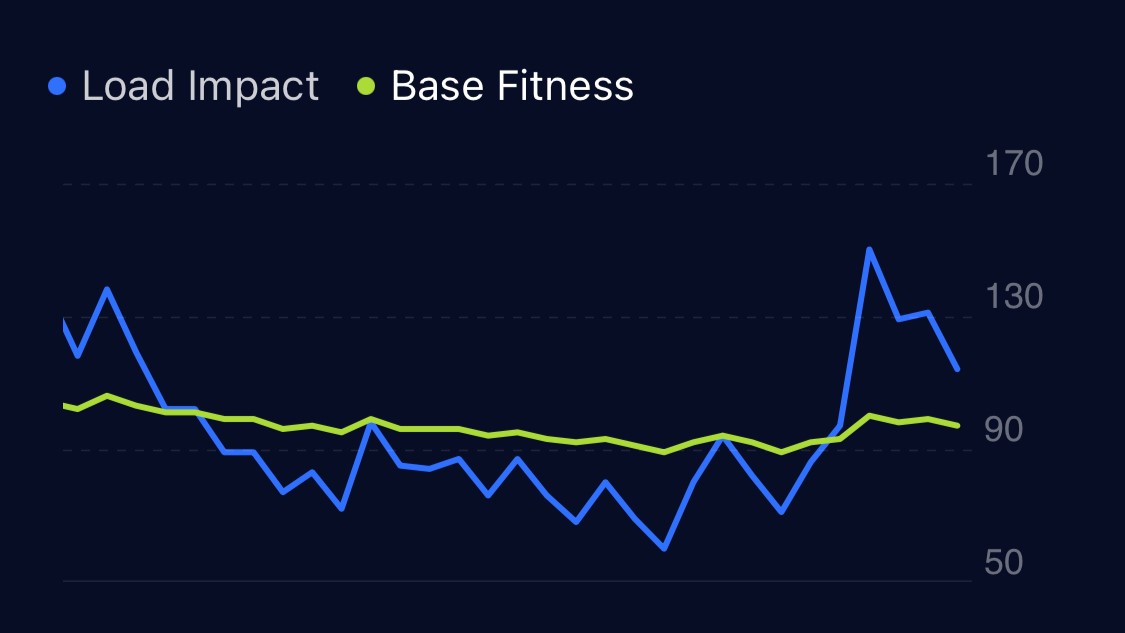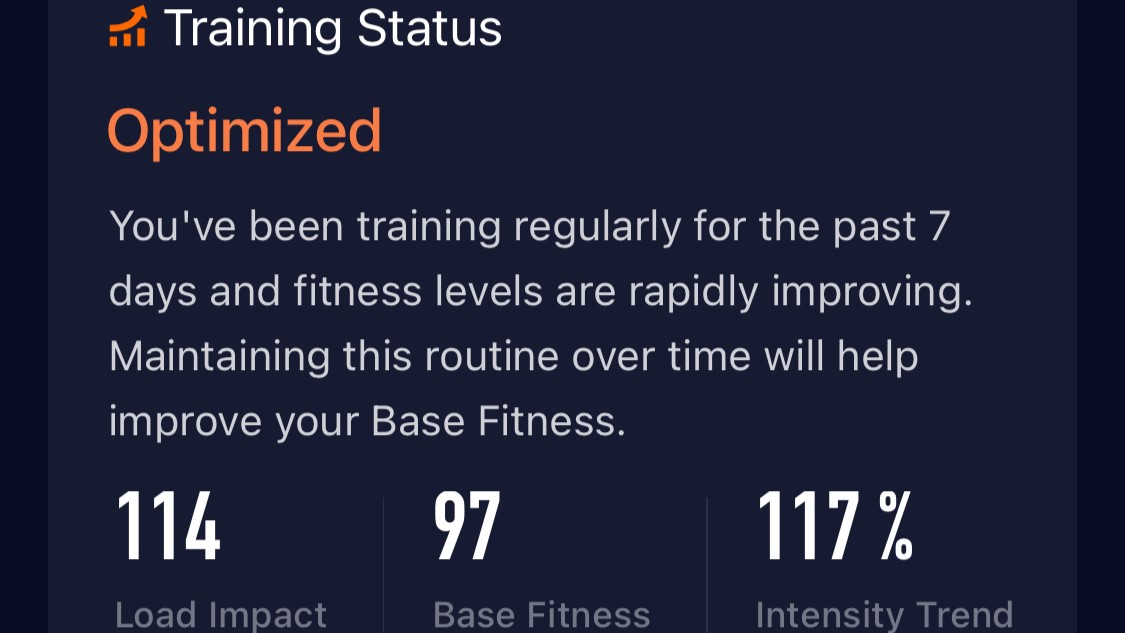
If you’ve been hitting the trails a lot lately, you might be curious to see what your Coros watch has to say about your performance and progress. Head into your Coros app, and under training status you’ll see a graph showing your base fitness as a green line.
In general, you probably assume that if that green line is trending up, it’s a good thing, and if it’s trending down, it’s time to get your trail running shoes back on – but is it really that simple? And what does base fitness mean anyway?
What is base fitness? And how is it calculated?
Base fitness is what Coros calls “the brain” of the brand’s EvoLab, where you can find all your personal training data, and it’s the key metric you should look at if you’re training for a specific event like a marathon or towards a goal such as running 10 km without stopping.
Base fitness is a 42-day rolling average of your training load. What’s training load, you ask? Every time you finish a workout with your Coros watch, it will assign it a value under training load which tells you how well your body handled that activity by looking at your heart rate intensity.
When you do a recovery run or gentler cross-training like a walk, swim or yoga session, the training load probably shows up as low, which doesn’t mean it wasn’t worthwhile, just that it’s an activity that aids recovery rather than, say, building muscle or improving VO2 max.
If an activity shows up with a medium training load score, which it usually will after a tempo or threshold run, that means it helped to improve your fitness, whereas a high-intensity training session or a long endurance run will show up with a high training load, and is deemed to improve your fitness more efficiently.
The key thing to understand about training load is that it refers to how your body responds to a single activity, whereas base fitness looks at how your body responds to multiple activities over a six-week period. Even if you’re not training for an event, a look at base fitness can provide a nice snapshot of the effects of your efforts.

How to use base fitness over time
Because base fitness represents a rolling average, it’s not something you need to look at every day, but it is a helpful metric to track throughout the year to understand your progress – where you’ve come from, where you stand now and where you need to get to next.
When you first open the Coros app, it will show your base fitness over the past 42 days, which provides a good snapshot into your recent training, however you can also change the view to see your base fitness over 90 days, six months or a year. You can also toggle back and forth to compare any of those time periods with the same dates from the previous year. This can be helpful as sometimes you may feel that you’re less fit than last year only to discover the numbers tell a different story.
Obviously, a higher value or a line that’s going up indicates improved fitness and means your body will be better able to tackle challenges like a race or longer run, so if you are working towards a performance goal, that’s generally what you want to see. Remember, however, that it’s normal for your fitness levels to vary throughout the year, so don’t be discouraged if the line isn’t always on an upward trajectory.
If the number is decreasing (and you’ve been wearing your watch for all of your workouts), it’s a sign that your fitness is decreasing, but that’s only a problem if that’s not what you’re trying to achieve. If you’ve been sick or injured, race season has ended for you, or you’re currently tapering before a big race, you should expect that number to be coming down from a peak while you’re body is in recovery mode.
If the line remains fairly steady, then you’re doing a good job of maintaining your fitness levels, and if you’re not currently working towards a specific goal and happy with how you feel during and after workouts and the frequency of your sessions, a straight line is just fine.

How to improve base fitness
Not happy with your base fitness levels? Improving base fitness varies according to the athlete and sport, but in general, you need to increase either the frequency or intensity of your workouts. For runners, that could mean adding in more sprint sessions, picking up the pace in tempo runs and increasing the distance of your longer runs. You still need to leave time for recovery between higher-intensity workouts, but you can use recovery runs and cross-training on those days to help build your fitness rather than taking total rest.
The real key is to remember the training principle of not advancing too quickly. Your body needs time to adapt to increased load, otherwise you’ll end up with tweaks and nasty injuries like shin splints or Achilles pain, so only increase load a little at a time to avoid overtraining.
If you’re increasing your time on the trail, think no more than 10 - 15 percent each week. Coros recommends you only build between 2 - 6 base fitness points each week, and remember it will take several weeks before you start to see that line trending upwards again, so be patient.
Don’t get too bogged down in the numbers, but look for the word “optimized” under your training status, which tells you that your fitness levels are improving without being injurious. If it reads as “high” or “excessive,” it may be time to back off.







